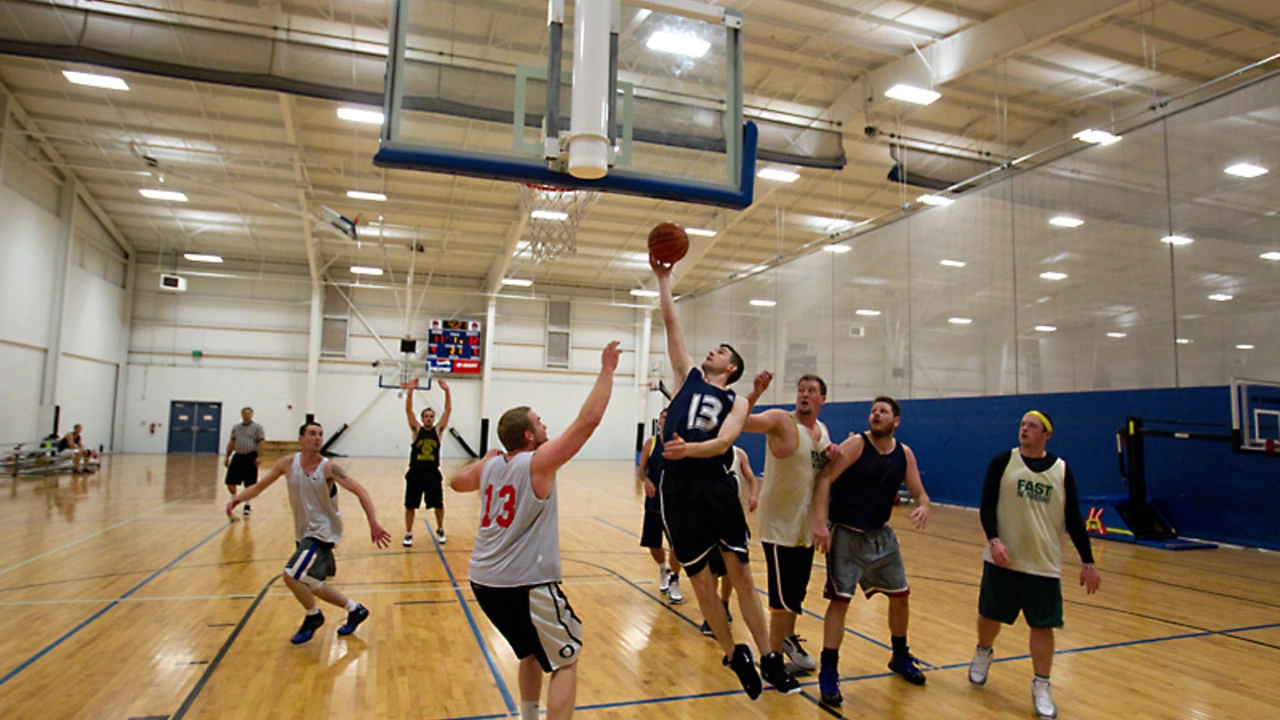Indoors, the Court King
Ah, the sweet sound of a basketball bouncing off a gleaming hardwood floor. Every thump a symphony and every swoosh a sonnet—what can compare? But what exactly makes a great indoor basketball, you ask? Any hoops enthusiast worth their salt knows that all basketballs are not created equal. An indoor basketball should have a strong grip, bounce well, and above all else, endure. It needs to survive the sweaty palms, wild passes, epic dunks, and possibly the occasional angry toss into the stands (not that I'd know anything about that).
In the past, I’ve personally been a victim of the inferior ball—slippery grip, inconsistent bounce, quick wear and tear—making the entire game more challenging than it needs to be. It was during one of these experiences that I made a decision that, as an ardent basketball lover, I had to take matters into my own hands. I embarked on a personal journey toward becoming an indoor hoop ball connoisseur.
Material Matters - Leather, Composite Leather, or Rubber?
The first thing to keep in mind is the material of the ball. The top tier indoor balls are typically made from genuine leather. These basketballs offer the best grip and seem to 'break in' nicely over time, just like a quality pair of unscuffed leather boots. However, they don't come cheap. My wife, Sabina, still reminds me of the time I mumbled something about ‘necessary investment’ under my breath when she saw the price tag. Well, let me assure you, it’s worth the investment if you're serious about your game.
The slightly lower priced balls are made from composite leather. This isn’t a downgrade though. In fact, they are a popular choice amongst many ballers and are permissible for professional games as well. They are still quite high-quality, providing good grip and control. Lastly, there are rubber basketballs. To be frank, they are more suitable for outdoor courts or just to be kept as spares.
Size and Weight – Feel the Ball and Rule the Court
The weight and size of a basketball seem obvious, right? I mean, they're all the same, aren't they? But here's the thing—basketballs, like your eccentric aunt's collection of cats, come in different sizes. The standard size for men's indoor basketball is 29.5 inches in circumference, but there are also 28.5 inches for women and youth, and 27.5 inches for kids under 12. The weight also varies accordingly. Picking the right ball size and weight is no rocket science but it’s also no laughing matter. Remember, control of the ball matters as much as your skillset.
My nephew once tried playing with a full-sized basketball, and you could just see his face scrunch up with the effort of trying to hold on to the ball. After switching to a youth-sized ball, it was like he was a totally different player - the passes were flying, shots were swooshing, and his confidence was soaring. So remember, size really does matter!
Branding the Ball
From Nike to Spalding, Molten to Wilson, the choices are endless when it comes to the brands producing top-notch indoor basketballs. However, perhaps what stands out more than the brand is the personal preference of the players themselves. I’ve seen guys shoot epic 3-pointers with a Wilson and others who swear by Spalding. Remember, the brand produced the ball but you’re the one who’s going to play with it.
A word of advice though, don’t become an unwitting victim of the brand trap. What’s more important is to ‘feel’ the ball and judge how comfortable you are controlling it. Trust me, I learned this the hard way. Once, during a game, I slipped trying to make a shot with a ball that was ‘branded’ but definitely not suited for the indoor court. Laughs were had, pride took a hit but the learning was priceless!
Top picks for Indoor Basketballs
So you’re all set with the basics now, right? Ready to get on the court and shoot some hoops? But hold on a minute, it’s time to choose your indoor basketball. Based on my personal experience and a whole lot of research, I've narrowed down a select top picks that would definitely enhance your indoor basketball experience.
Wilson Evolution Game Basketball - If you're looking for a go-to indoor basketball, this one is a top pick. It's got a great grip and surprisingly still, a very reasonable price tag, making it popular amongst high school and college teams.
Spalding TF-1000 Classic Indoor Basketball - If you prefer a bit more weight in your dribble, this ball is for you. With exclusive composite cover design, it offers tremendous ball control.
The Rock - Indoor Basketball - The Rock's basketball, although a little pricey, is highly praised for its grip and durability, offering exceptional value for its cost.
Conclusion: On the Bounce
Investing in a good indoor basketball is no trifling matter. I've learned my lessons, and my research and experiments have finally culminated into this guide. I hope it helps you make the choice that best meets your requirements. Remember, a great player once said that the basketball holds the power, but only when you know how to unlock it! Now it’s your turn to unlock the power on the indoor court!
